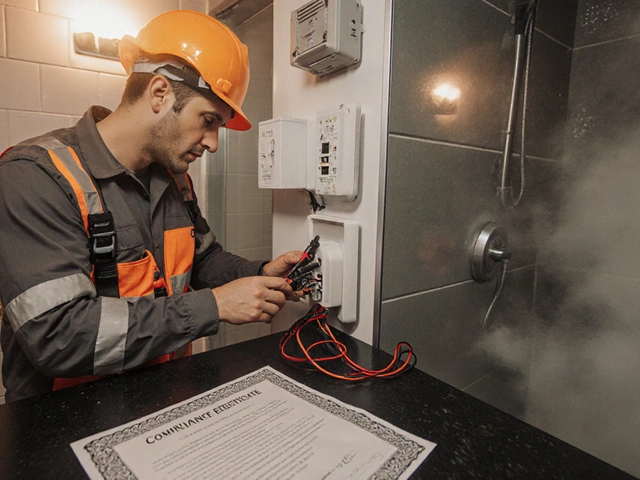Bathroom Fans – Everything You Need to Know
If you’ve ever walked out of a steamy shower and felt a sticky chill, you know a good bathroom fan matters. It pulls damp air out, stops mould, and keeps the room smelling fresh. The right fan does the job quietly and lasts for years. This guide shows you how to choose the best fan, keep it running smoothly, and fix the most common hiccups.
Choosing the Right Bathroom Fan
Start by checking the size of your bathroom. Fans are rated by how many cubic feet of air they can move per minute (CFM). A small powder room needs about 50 CFM, while a master bathroom with a tub may need 100 CFM or more. Too small and the fan will barely clear the moisture; too big and it could be noisy and waste electricity.
Next, think about noise. Fan ratings use sones – lower numbers mean quieter operation. A fan at 1.0 sones is whisper‑quiet, while 3.0 sones are audible. Most homeowners prefer under 2.0 sones for comfort.
Look for a humidity‑sensing model if you want extra convenience. These fans turn on automatically when moisture levels rise and shut off when the air dries. They cost a bit more but save energy and keep mould at bay without you remembering to flip a switch.
Finally, check the electrical requirements. Most bathroom fans run on a standard 120‑V circuit, but larger, high‑CFM models may need a dedicated line. If you’re unsure, ask a qualified electrician before you install.
Maintaining and Fixing Common Issues
Even the best fan can lose performance over time. Dust and hair collect on the blades and motor, reducing airflow. A quick cleaning every six months keeps the fan humming efficiently. Turn off the power, remove the cover, and vacuum or brush away debris. If you can’t get to the blades, a soft brush attachment on a vacuum works well.
Noise problems often mean the fan is loose or the bearings are wearing out. Tighten any loose screws you see and make sure the fan sits flat against the ceiling. If the hum turns into a grinding sound, the motor bearings may need lubrication or replacement – that’s a job for a pro.
Sometimes the fan won’t turn on at all. First, check the switch and bathroom light – many fans share the same control. If the light works but the fan doesn’t, the fuse or circuit breaker could be tripped. Reset the breaker; if it trips again, the fan motor may be shorted and needs professional repair.
Condensation inside the fan housing can cause rust and foul smells. Install a small piece of rubber gasket when you replace the cover to keep moisture out. If you notice a persistent musty odor, clean the housing with a vinegar‑water solution and dry it thoroughly.
When you hit a problem you can’t solve, don’t force the fan apart. Bad wiring or a burnt motor can be a fire risk. Call a qualified technician – they’ll diagnose the issue quickly and safely.
Regular maintenance not only extends the life of your fan but also saves you money on energy bills and mould remediation. A well‑ventilated bathroom stays fresher, looks cleaner, and protects the rest of your home from water damage.
Bottom line: pick the right size and quiet fan, clean it twice a year, and call a pro when the motor or wiring gives you trouble. Follow these simple steps, and your bathroom will stay dry, quiet, and comfortable for years to come.






